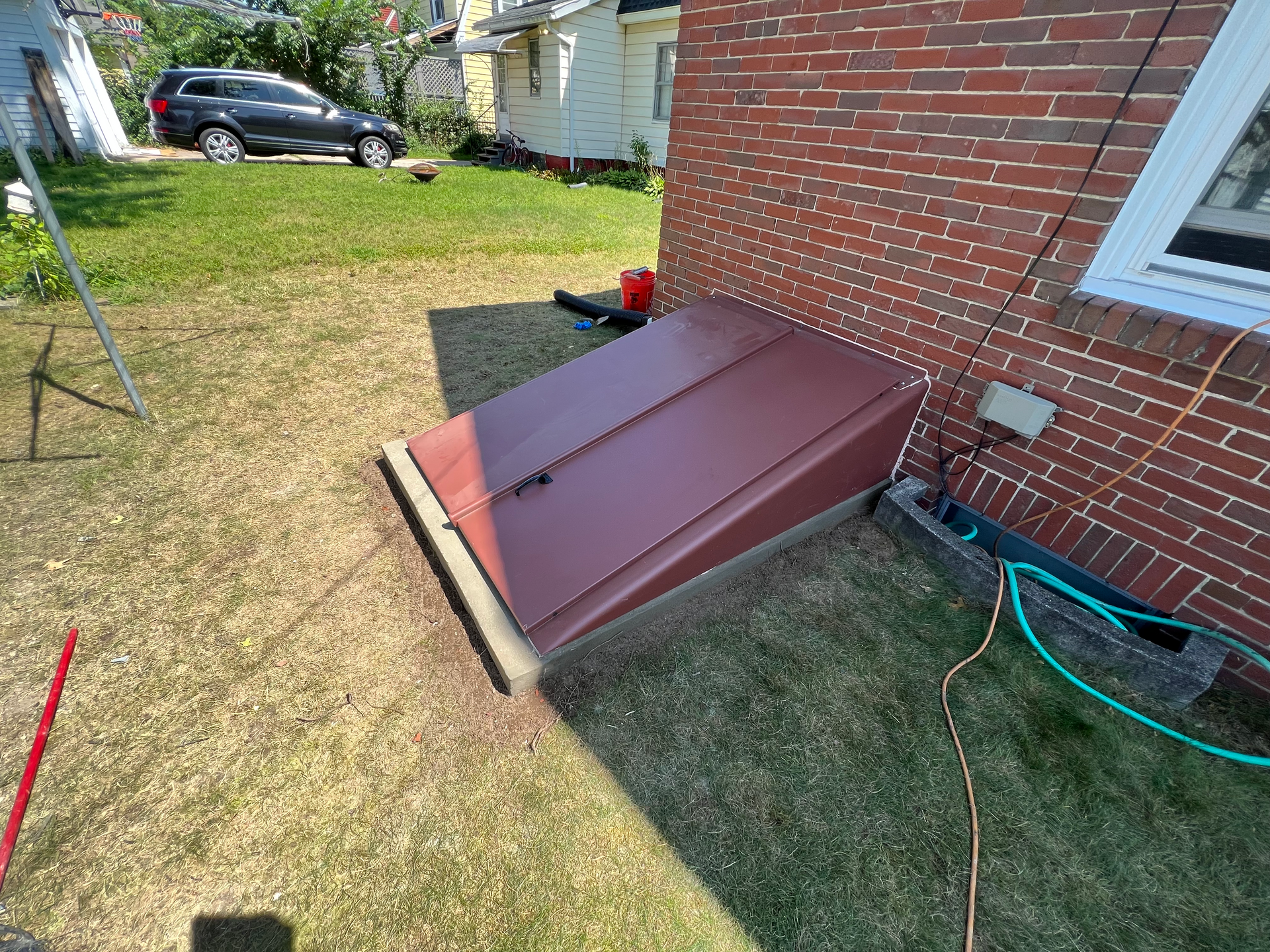Do You Need to Seal or Replace Your Hatchway? Here’s How to Tell
If water is getting into your basement through the hatchway doors, you’re not alone. Leaking hatchways are a common issue, especially in older homes or after years of harsh weather. But how do you know if sealing the hatchway will fix the problem or if a full replacement is needed?
This article will guide you through the most common causes of hatchway leaks, signs to look for, and how to decide between sealing and replacing. Everything is easy to understand and based on what we see every day in local homes.
Why Hatchways Start Leaking

Your hatchway is designed to keep water and debris out of your basement. Over time, weather, wear, and age can weaken the seal or damage the materials. Water starts finding its way in through small gaps, rusty hinges, or even cracks in the concrete surrounding the hatchway.
In Connecticut and Western Massachusetts, the climate creates even more pressure on this part of the home. Heavy rain, melting snow, and freezing temperatures can make the problem worse if the hatchway isn’t sealed properly or if the doors are no longer in good shape.
Signs Your Hatchway Might Be Leaking
If you’re unsure whether your hatchway is the source of water in your basement, here are some signs to look for:
- Water stains near the hatchway
- Damp or musty smells, especially after rain
- Rust or visible damage on the doors or hinges
- Pooled water at the base of the hatchway stairs
- Light coming through gaps around the door edges
Noticing any of these may be a signal to have the hatchway checked before the issue gets worse.
When Sealing May Be the Right Fix
In many cases, sealing the hatchway can stop the leak. This is a good option when the structure of the hatchway is still solid, but water is slipping in through smaller cracks or seams. A high-quality waterproof sealant can be applied to keep moisture out.
Sealing may work well if:
- The doors still close tightly and move properly
- There’s no major rust or bending
- The leak is small and only shows up during heavy weather
- You want a quick and cost-effective fix
At Advanced Basement Waterproofing, we assess the condition of your hatchway and apply a long-lasting seal if that's the best solution.
When a Replacement Makes More Sense
Sealing isn’t always enough. If the doors are damaged, loose, or worn out, water will continue to find a way in no matter how much sealant you use. In these cases, a full hatchway replacement is often the better option.
You may want to consider replacing your hatchway if:
- The doors are dented, rusted, or sagging
- The frame or concrete around it is cracked
- You’ve already sealed it, but the leak keeps returning
- You want a cleaner, safer, and updated entry to your basement
Replacing the hatchway can improve both function and appearance. It also gives you peace of mind knowing the area is properly sealed for the long run.
How We Can Help
Whether you need a seal or a full replacement, we can help you figure it out. At Advanced Basement Waterproofing, we’ve seen all types of hatchway issues across the region. We know what works and what doesn’t—and we won’t recommend more than you need.
We’ll take a close look at your hatchway and surrounding foundation. From there, we’ll suggest the right fix based on your home’s specific condition. Our goal is to stop the water from coming in and help you avoid future damage.
Keep Water Out Where It Belongs
Your hatchway should protect your basement, not invite water inside. With the right repair—whether that’s a proper seal or a full door replacement—you can keep your basement dry and avoid more costly issues down the road.
If you’ve seen any signs of a leak or just aren’t sure if your hatchway is in good shape, reach out to Advanced Basement Waterproofing. We’re here to help you protect your home and give you real solutions that last.
Frequently Asked Questions
How do I know if sealing is enough or if I need to replace the hatchway?
If the doors are in good shape but water is sneaking in around the edges or seams, sealing may be all you need. But if the doors are rusted, warped, or pulling away from the frame, a replacement is usually the better solution.
How long does it take to seal or replace a hatchway?
Sealing a hatchway can usually be done in just a few hours. Replacing it takes longer, often a full day, depending on the size and condition of the existing structure.
Will a new hatchway really stop basement leaks?
Yes, if the leak is coming through the hatchway, a proper replacement with the right seal and fit can completely stop water from getting in.


